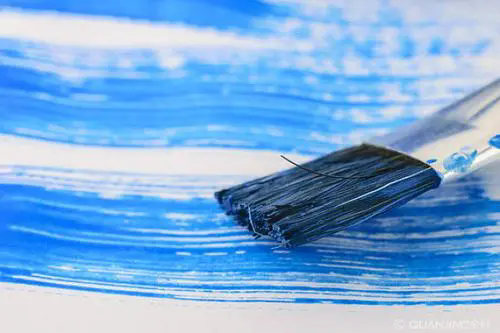Essential Brush Techniques for Paint Application
Achieving a smooth, professional finish with a paintbrush depends on mastering fundamental techniques. From controlling paint flow to adapting strokes for different surfaces, understanding these basics ensures better results and reduces the need for touch-ups.
Loading the Brush Correctly
Before applying paint, the brush must be loaded evenly to avoid drips or uneven coverage. Dip only the lower third of the bristles into the paint, then gently tap the brush against the inside of the container to remove excess. This prevents overloading, which can lead to runs or thick, blotchy layers.
For rollers, use a paint tray with a ridged surface to distribute paint evenly. Roll the brush back and forth until the bristles are saturated but not dripping. Avoid pressing too hard, as this forces paint into the brush’s core, making it harder to control.

Stroke Techniques for Different Surfaces
The way you move the brush depends on the surface being painted. For flat walls or ceilings, hold the brush at a 45-degree angle and use long, overlapping strokes. Start slightly away from the edge and work inward to blend the paint smoothly. This method minimizes visible brush marks and ensures even coverage.
When painting edges, corners, or trim, switch to a smaller brush and use shorter, controlled strokes. For wood surfaces, always follow the grain to prevent raised fibers or uneven texture. Apply light pressure and work in sections, reloading the brush frequently to maintain a consistent flow.
Handling Cut-Ins and Detailed Work
Cutting in—painting along edges where a roller can’t reach—requires precision. Use an angled brush for better control near ceilings, baseboards, or window frames. Steady your hand by resting it against the surface or using your other hand as a guide. Work slowly and reload the brush often to avoid dragging dry bristles across the paint.
For intricate details like moldings or decorative trim, a smaller brush with fine bristles is ideal. Dip only the tip into the paint and use light, dabbing motions to build up coverage gradually. This prevents pooling and ensures sharp lines.
Managing Paint Flow and Consistency
Thin, even coats are key to a flawless finish. If the paint is too thick, it may drag or leave streaks. Add a small amount of water (for latex) or solvent (for oil-based paints) to thin it slightly, then stir thoroughly. Test the consistency on a scrap piece of material before starting the project.
Avoid overworking the paint by brushing back and forth excessively. This can create air bubbles or lift previously applied layers. Instead, apply the paint in one direction, then lightly feather the edges to blend. Let each coat dry completely before applying the next to prevent peeling or cracking.
Common Mistakes and How to Avoid Them
One frequent error is applying too much pressure, which pushes paint into the brush’s base and causes uneven release. Hold the brush lightly and let the bristles do the work. Another issue is neglecting to clean the brush between coats, which can lead to clumps or dried paint in the bristles. Rinse the brush briefly in water or solvent and dry it with a cloth before reloading.
Using a brush that’s too stiff or too soft for the paint type can also cause problems. Natural bristles work best with oil-based paints, while synthetic brushes are ideal for water-based formulas. Always match the brush to the paint to ensure smooth application.
Adapting Techniques for Specialty Finishes
For textured surfaces like brick or stucco, use a stiffer brush and apply paint in a crisscross pattern to fill crevices. Work in small sections to prevent the paint from drying before it’s fully absorbed. For glossy finishes, a high-quality synthetic brush with tapered bristles helps achieve a streak-free shine.
When painting furniture or cabinets, sand the surface lightly between coats to create a smooth base. Use a foam brush for tight corners or detailed areas, as it leaves fewer brush marks. Apply thin layers and build up coverage gradually to avoid drips.
By refining these basic techniques, you can tackle any painting project with confidence. Practice on scrap materials to perfect your strokes, and always prioritize even loading and controlled pressure for the best results.
